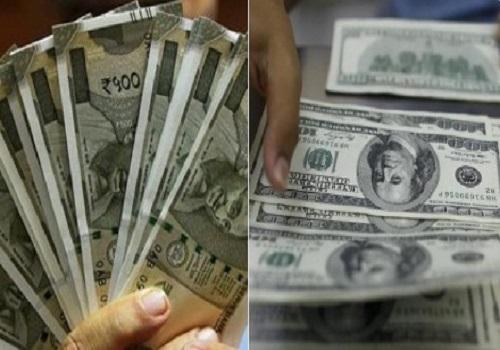
Rupee Weakens Against US Dollar on Tuesday
The Indian rupee weakened against the US dollar on Tuesday, marking a significant decline in the value of the domestic currency. This decline is attributed to foreign fund outflows from the Indian capital market, as well as weak domestic equities, which dampened investor sentiments.
According to exchange data, foreign institutional investors (FIIs) offloaded equities worth ₹525.95 crore on a net basis on Monday. This significant outflow of funds from the Indian market led to a weakening of the rupee against the US dollar. The rupee was trading at 74.32 per US dollar at the close of the trading session on Tuesday, down from 73.95 per US dollar on Monday.
Foreign fund outflows from the Indian market are not a new phenomenon, but the scale of the outflow seen on Monday was particularly significant. FIIs have been net sellers of Indian equities for several months now, citing concerns over the country’s economic growth and the impact of the ongoing pandemic on the economy. The outflow of funds has led to a weakening of the rupee, making it more expensive for foreign investors to buy Indian assets.
Weak domestic equities also contributed to the rupee’s decline. The benchmark S&P BSE Sensex fell by 1.15% on Monday, led by declines in shares of technology and financial sector stocks. The fall in domestic equities led to a decline in investor confidence, which in turn led to a weakening of the rupee.
The rupee’s decline against the US dollar is also attributed to the strong performance of the dollar against other major currencies. The dollar index, which measures the value of the US currency against a basket of major currencies, rose by 0.25% on Monday. This strength in the dollar led to a weakening of the rupee, as investors sought to take advantage of the dollar’s strength.
The weakening of the rupee is likely to have several implications for the Indian economy. Firstly, it is likely to increase the cost of imports for Indian consumers, including essential items such as food and fuel. This could lead to higher prices and a decline in the purchasing power of Indian consumers.
Secondly, the weakening of the rupee is likely to make it more difficult for Indian companies to service their foreign debt. Many Indian companies have significant amounts of foreign debt, which they need to service regularly. A weakening of the rupee makes it more expensive for these companies to service their debt, which could lead to a decline in their profitability.
Thirdly, the weakening of the rupee is likely to make it more difficult for the Indian government to attract foreign investment. The government has been seeking to attract foreign investment to fund its infrastructure projects and stimulate economic growth. However, a weakening of the rupee makes it more difficult for foreign investors to invest in India, as the value of their investment is reduced.
In conclusion, the rupee weakened against the US dollar on Tuesday due to foreign fund outflows from the Indian capital market and weak domestic equities. The weakening of the rupee is likely to have several implications for the Indian economy, including higher prices, higher debt servicing costs, and reduced foreign investment. It is important for the government to take steps to address these issues and stabilize the value of the rupee.
Source: https://investmentguruindia.com/newsdetail/rupee-weakens-against-us-dollar-on-tuesday305074






